Sometimes what we see is not what it really is. Interior designers consciously work toward changing the entire perception of the room with the help of optical illusions. Using visual trickery that appears to differ from reality, they manage to expand space, play with history and architecture, and create alternate worlds.
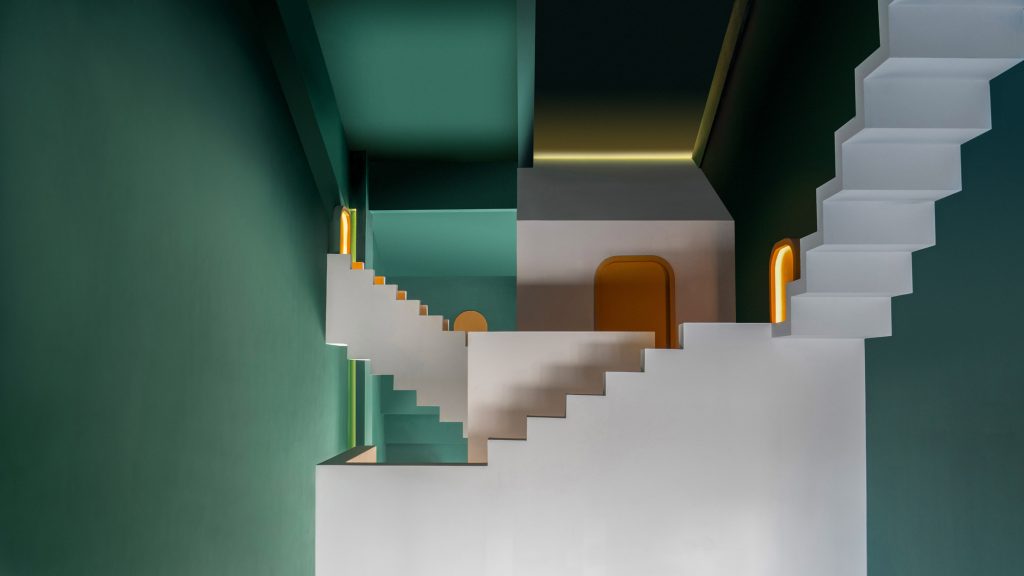
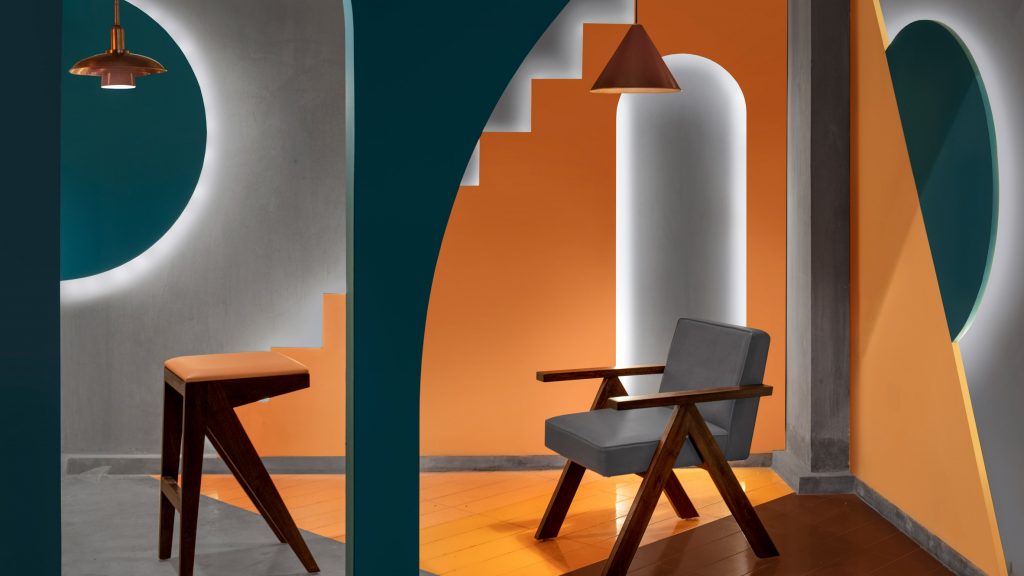
Unlocked by Renesa
The concept behind Unlocked, a bar and kitchen in the city of Gurugram, southwest of New Dehli, India, by local Renesa Architecture Design Interiors Studio was to manipulate the space in order to create multiple pockets that arise from an array of lines and shapes.
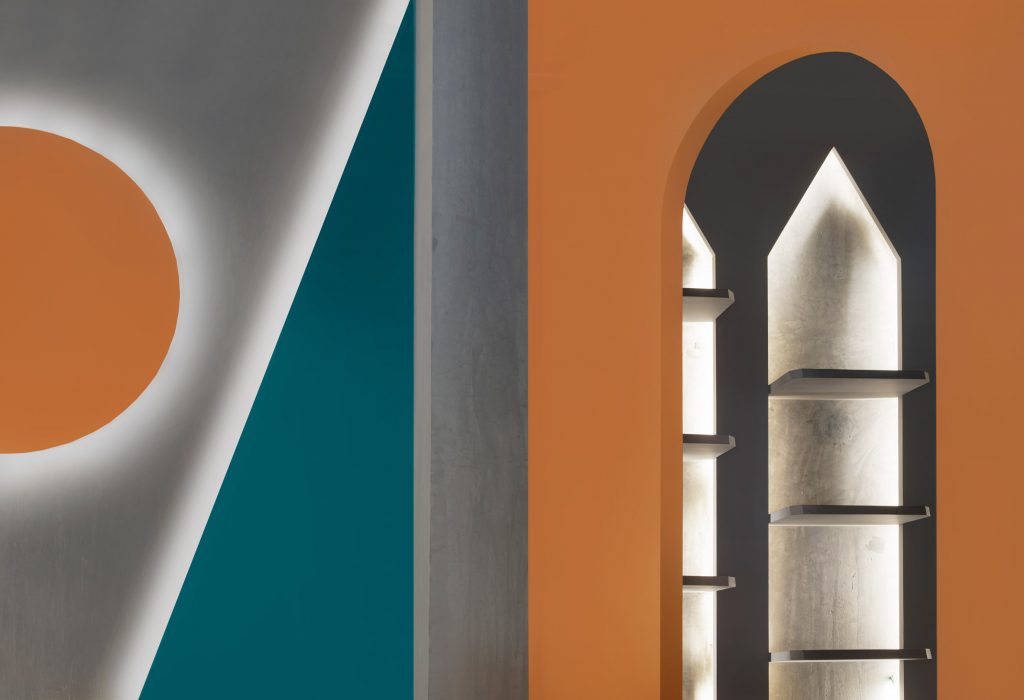

Unlocked by Renesa
The space comprises a restaurant and an escape room unlocking a variable experience that includes the visitor from the very start evoking the sensation of being on a journey. The design is characterized by geometric shapes that reflect a modern intake on traditional Indian architecture. It takes cues from elements of Jantar Mantar – huge masonry sundials erected by Maharaja Jai Singh II in the 18th century in Delhi and Jaipur – as well as from Monument Valley, an indie puzzle game that sees players lead protagonist character through a maze of optical illusions.
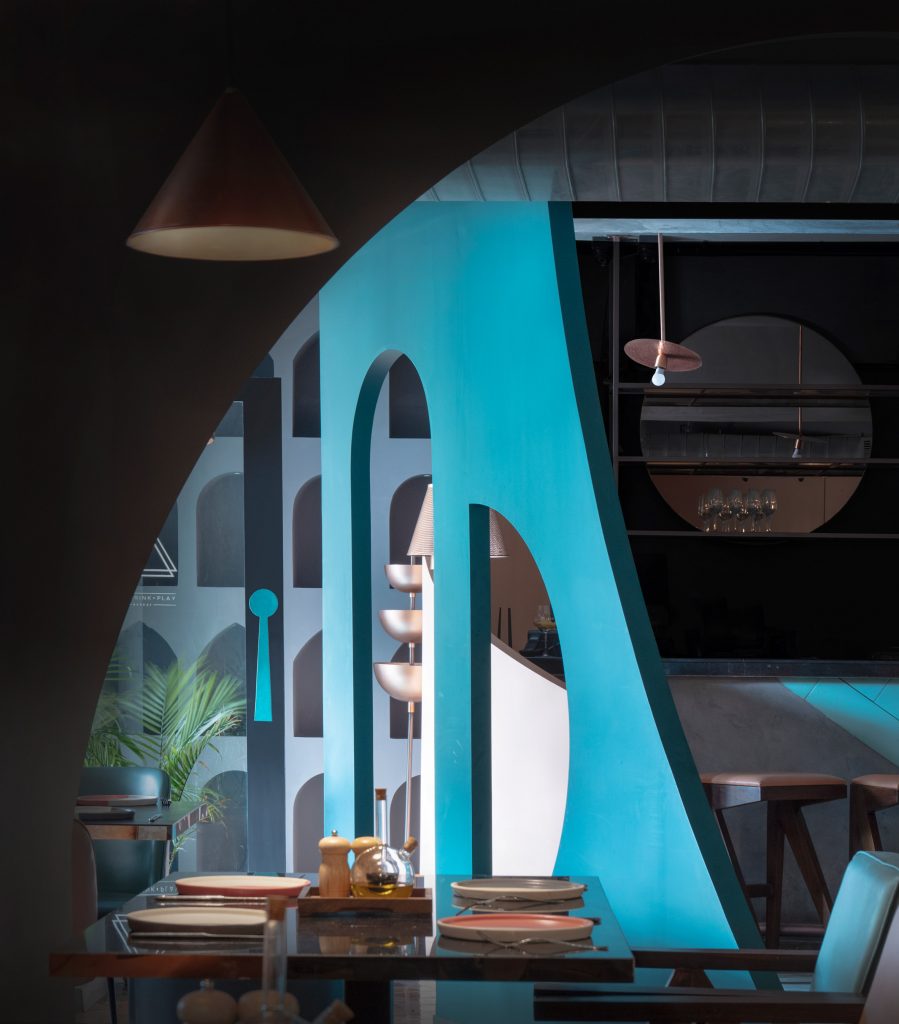
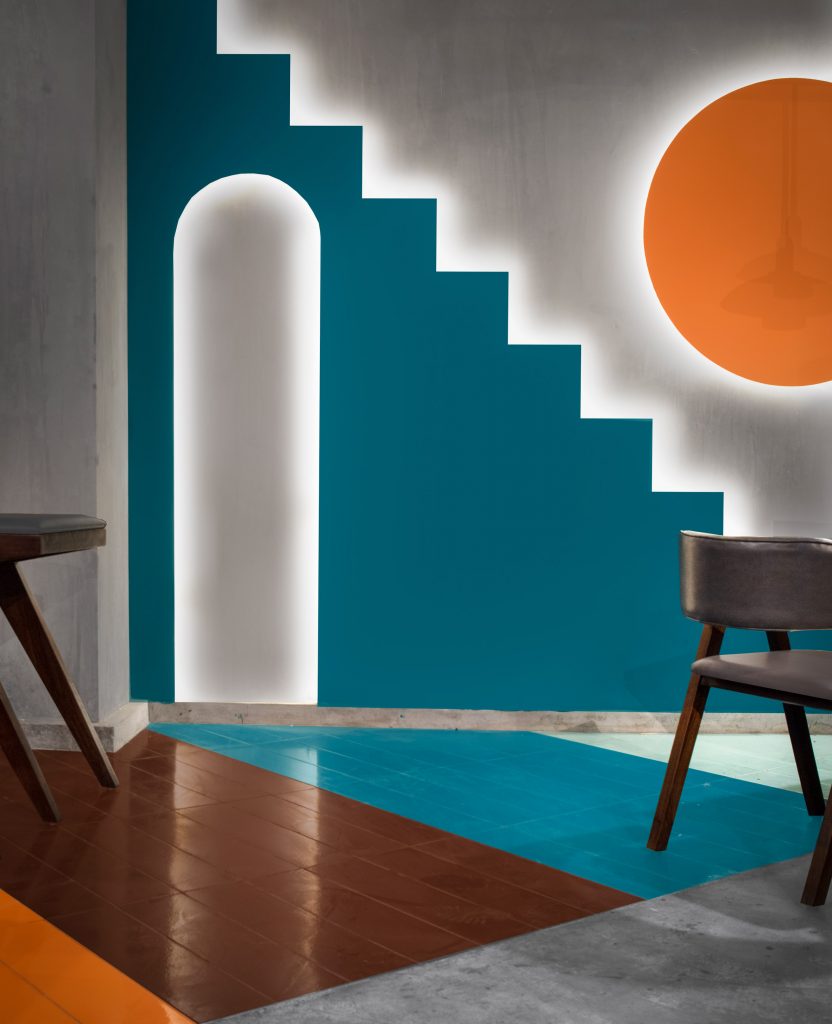
Unlocked by Renesa
The resulting spatial experience is filled with volumetric galleries and partitioned masses. Informed by Jantar Mantar’s ornamental staircases and curvaceous walls punctuated by arched windows, the interior of the restaurant features a series of teal-blue or peach-coloured partitions offset against exposed concrete walls that include vaulted openings leading through to dining rooms. Providing a pleasant meeting and social interaction area, each dining area is defined and unified with exposed concrete flooring highlighting either the geometry or the mix of heterogeneous colors.
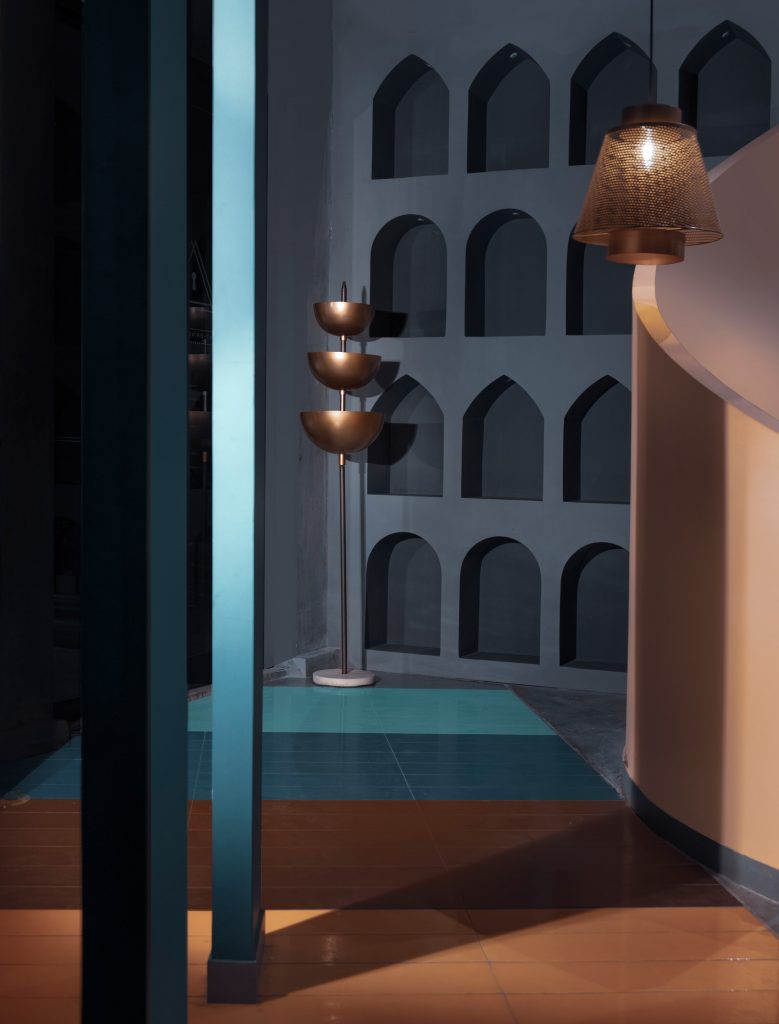
Unlocked by Renesa
One of the main walls also feature niches in the shape of semicircular and pointed arches that look through to small nooks dressed with wood-framed chairs and stools where guests can sit and play games. The visitors get an impression of being connected while enjoying privacy.
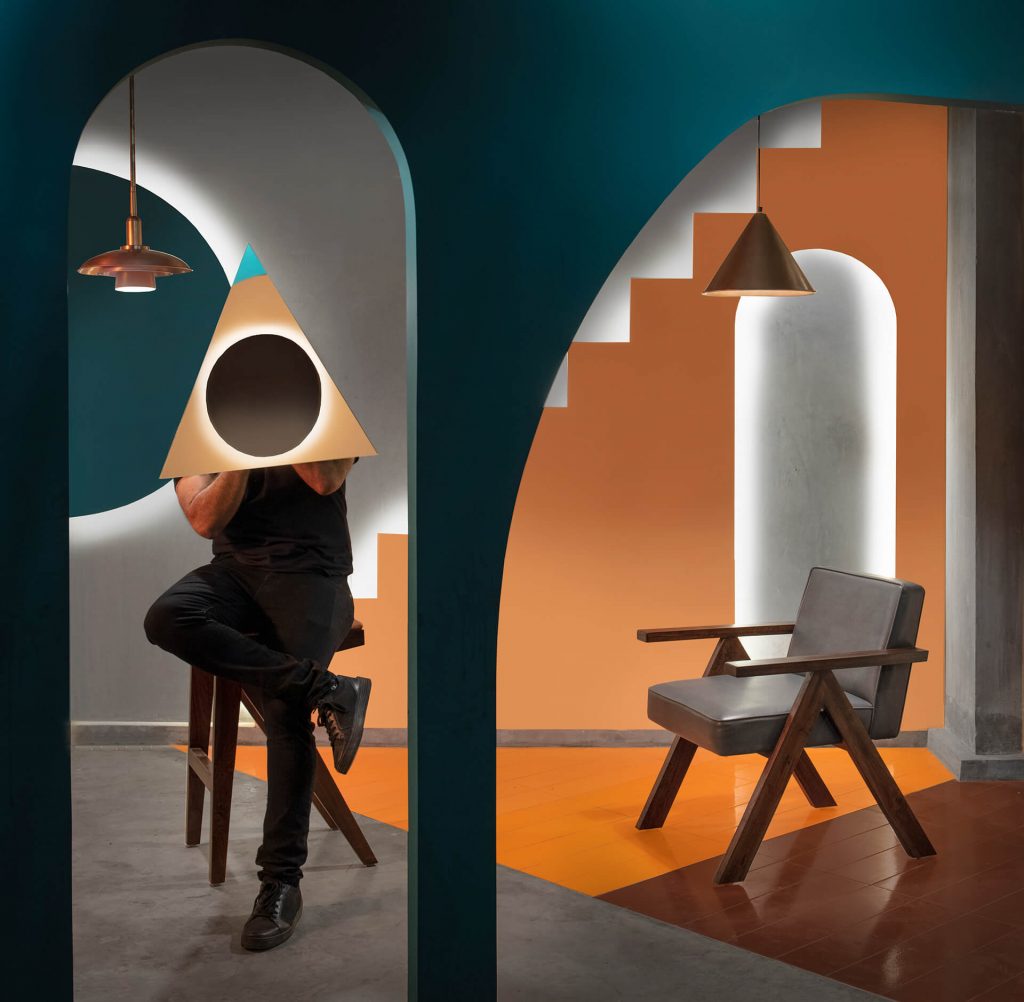
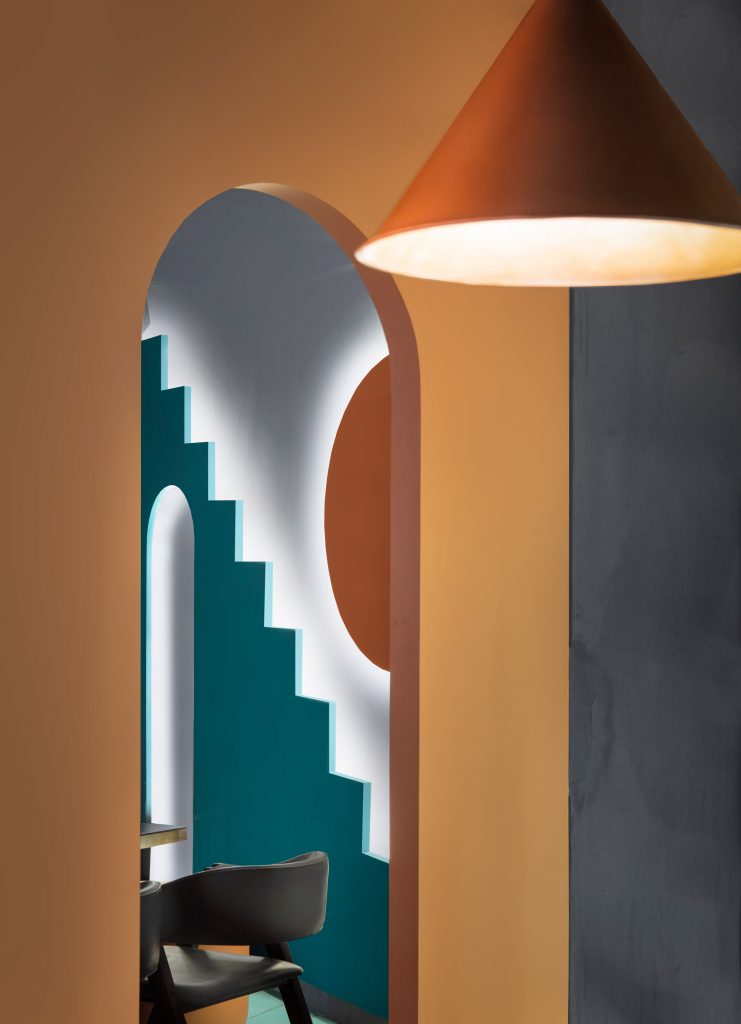
Unlocked by Renesa
The playfulness continues in the surfaces, fixtures and furniture across the restaurant. Distinct sculptural lighting design chosen for the project serves to distinguish the different volumes – cove lights light the walls of the café, while pendant lights and floor lamps in a rose gold scheme further add to the character and cast interesting shadows in the space. Thus, the interiors have been deliberately altered in order to instantly transport visitors to an uncertain realm.

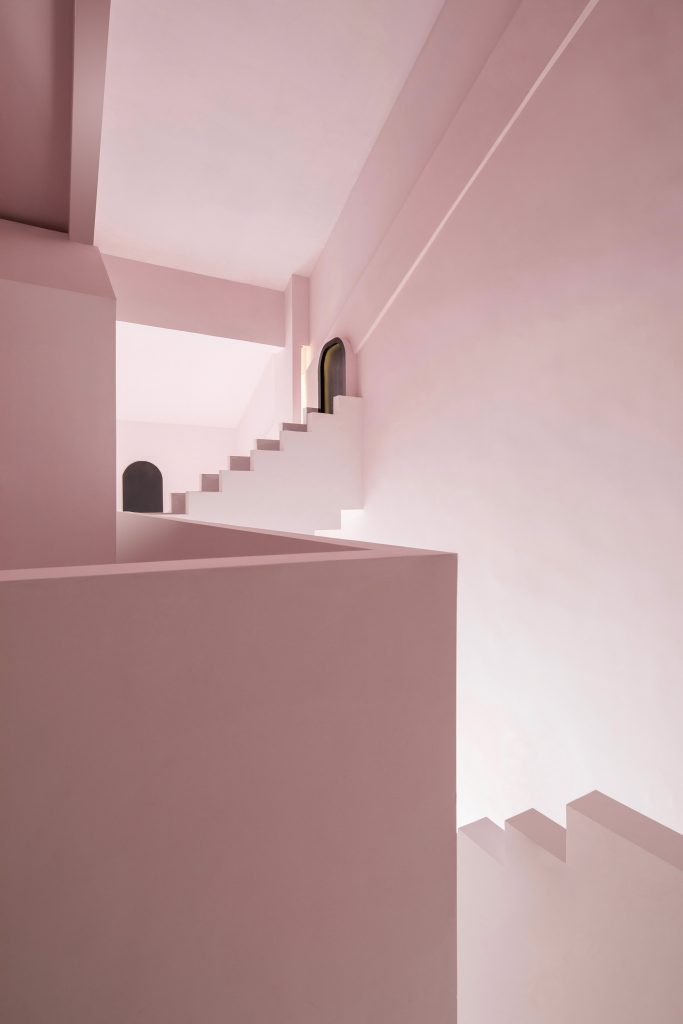
Dream guest rooms by Studio 10
Shenzhen-based Studio 10 has also opted for optical illusions for their guest rooms design in The Other Place guesthouse in the city of Guilin, China. The mini hotel is comprised of differently themed rooms conceived as an alternate world, or a “hideout from the bustling world”, and the studio has designed two of them, named Dream and Maze.
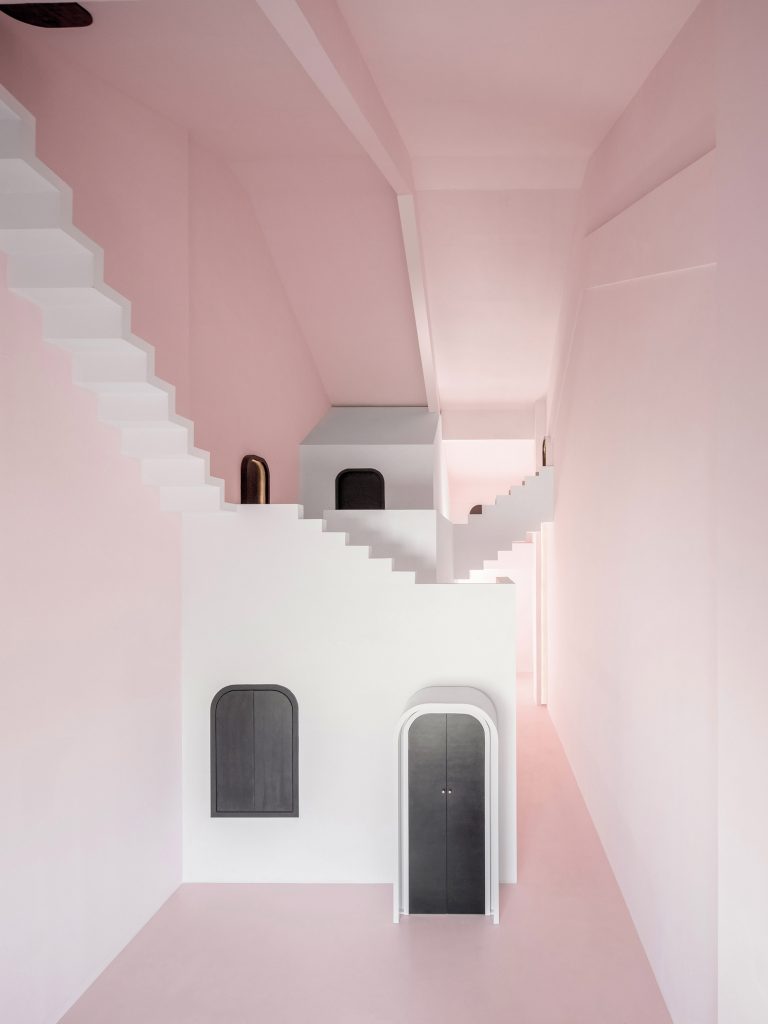
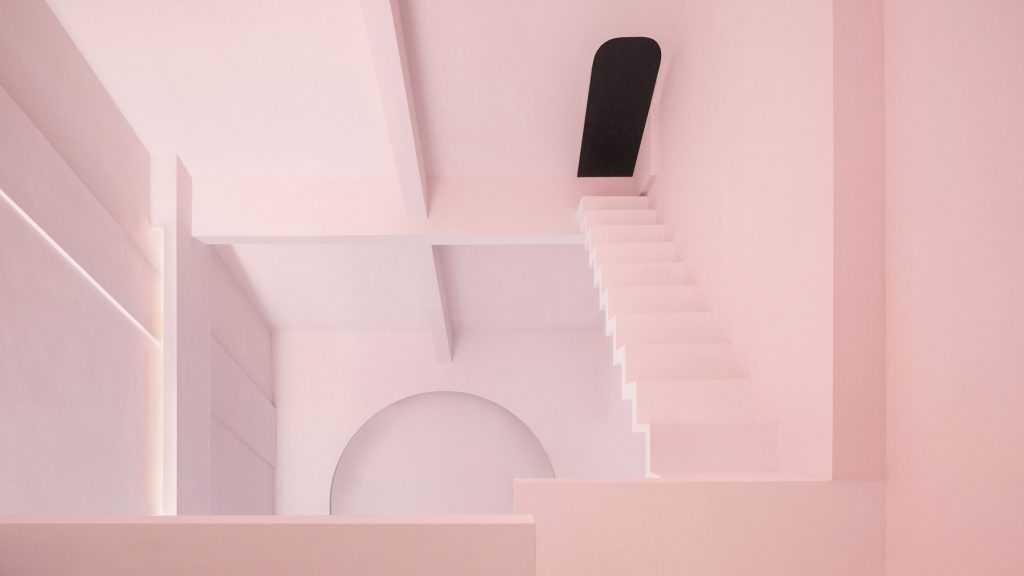
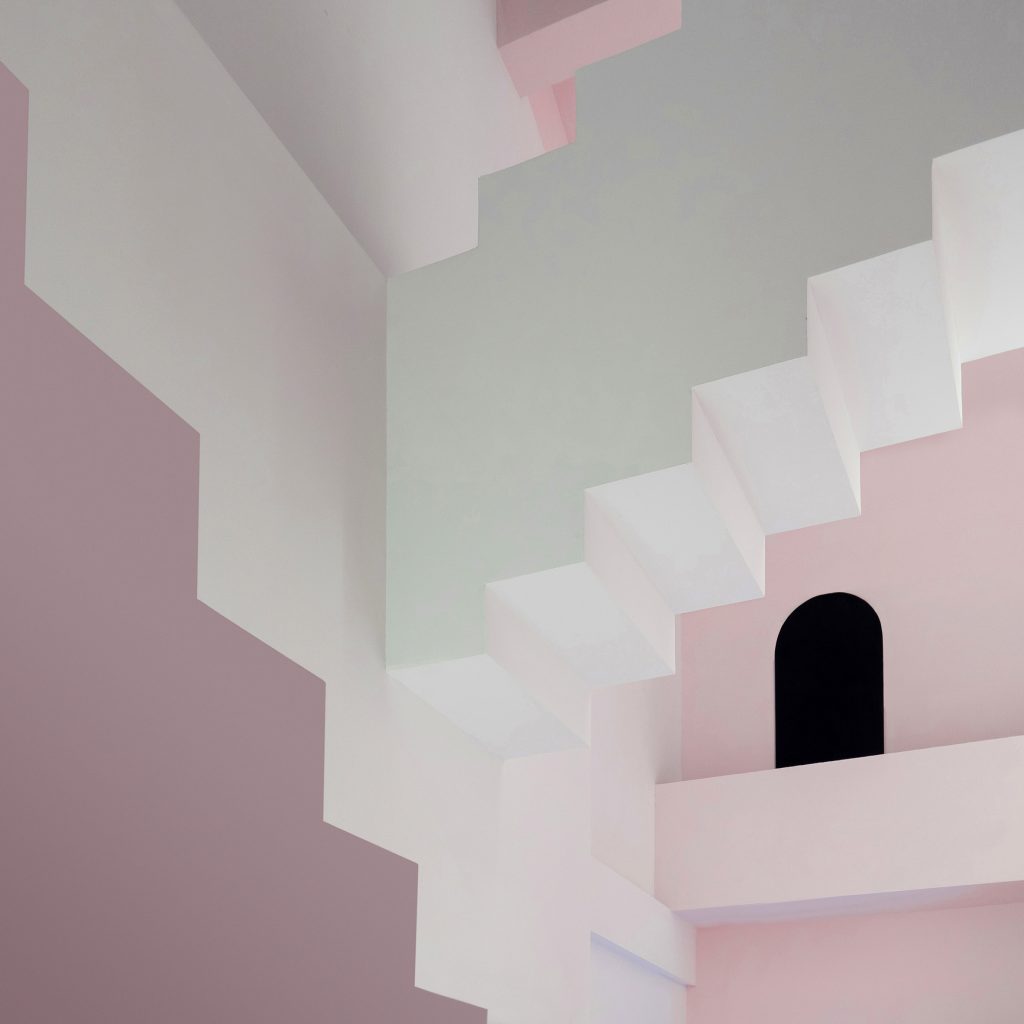
Dream guest rooms by Studio 10
Striking the perfect balance between the practical need of a hotel suite and the illusionary, spatial effect, the team has managed to merge 2D and 3D elements to produce a series of optical illusions. Informed by the work of Dutch graphic artist Escher known for his eye-tricking illustrations, the two whimsical interiors feature puzzling arched doorways and anti-gravitational maze-like staircases.
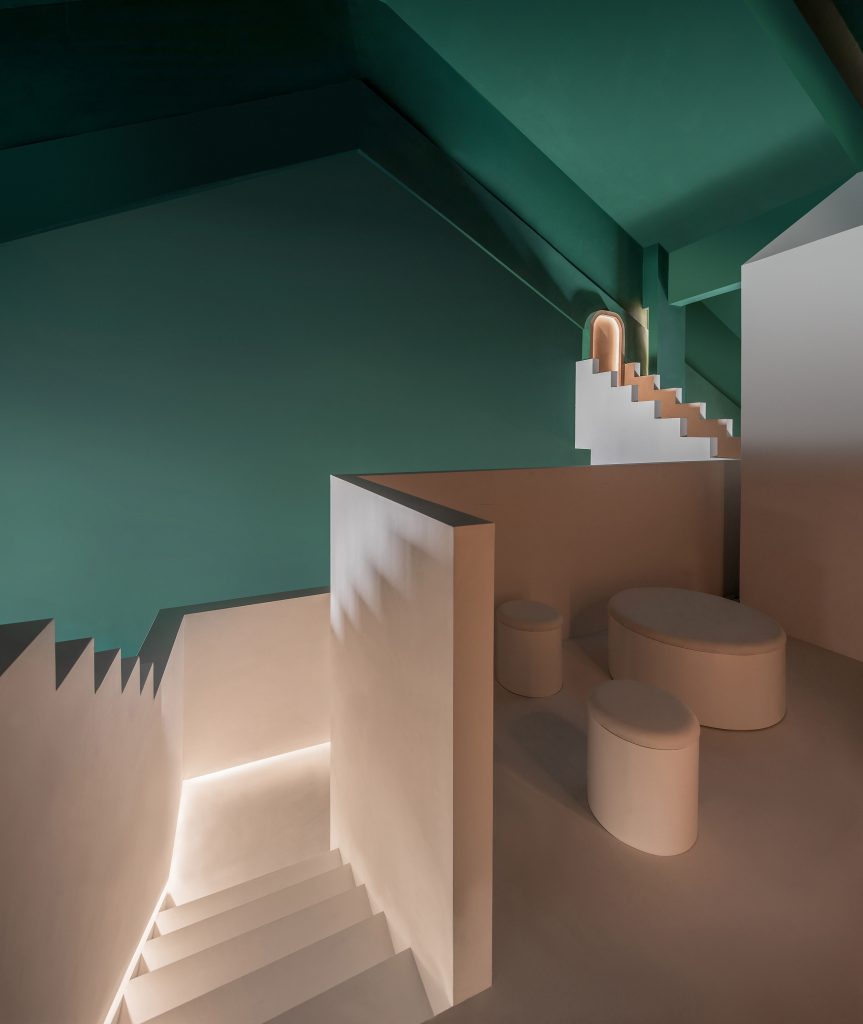
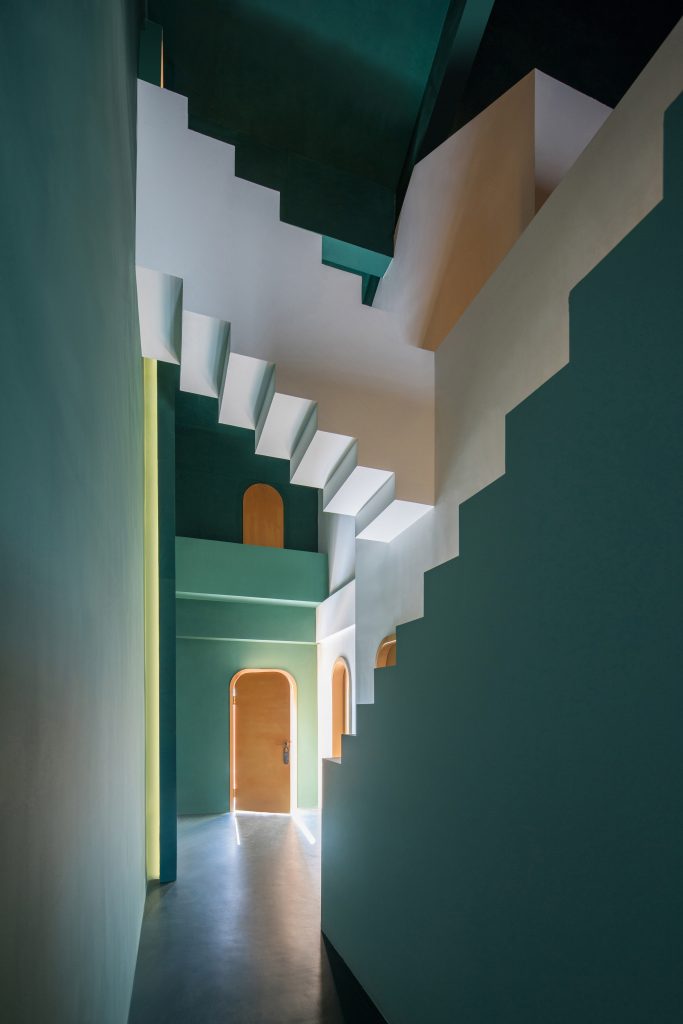
Maze guest rooms by Studio 10 (also header image)
While the Maze rooms boast a colour palette of forest green and gold to evoke a fairy-tale-like secret forest, the Dream rooms boasts hues of pale pink and white. This not only creates a serene environment taking the occupant away from the chaos of daily life, but is also associated with cotton candy and marshmallows, playfully hinting towards ‘sweet dreams’ bedroom setting. To maintain the whimsical nature of the interior intact, any components indicative of the real world, such as light fixtures and electronic appliances, have been concealed behind a series of fake doors painted in black.
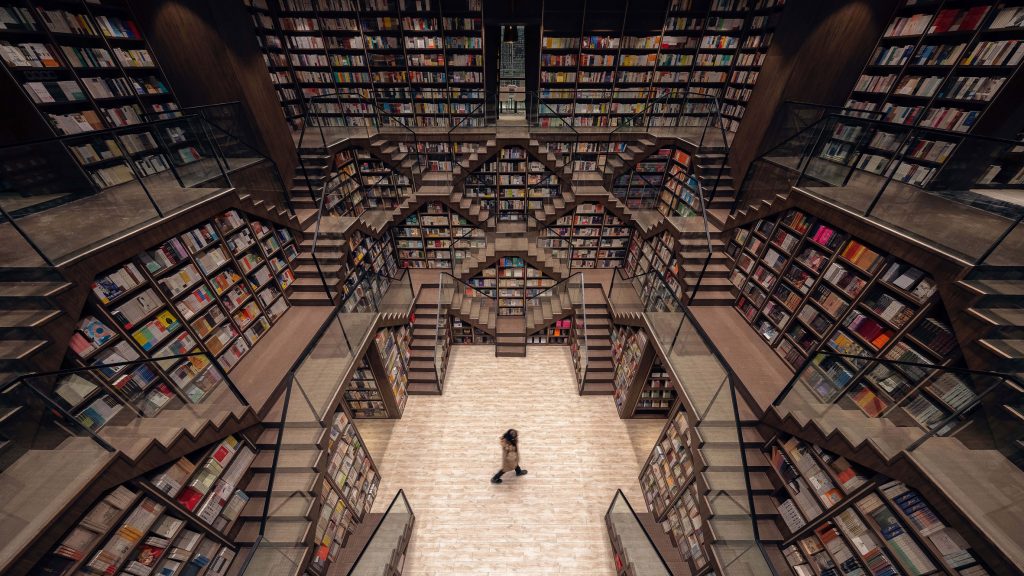
Chongqing Zhongshuge Bookstore by X+Living
Another project inspired by Escher’s famous Relativity lithograph is the Chongqing Zhongshuge Bookstore by Shanghai-based X+Living located on the third and fourth floors of Chongqing’s Zodi Plaza in Yangjiaping, China.
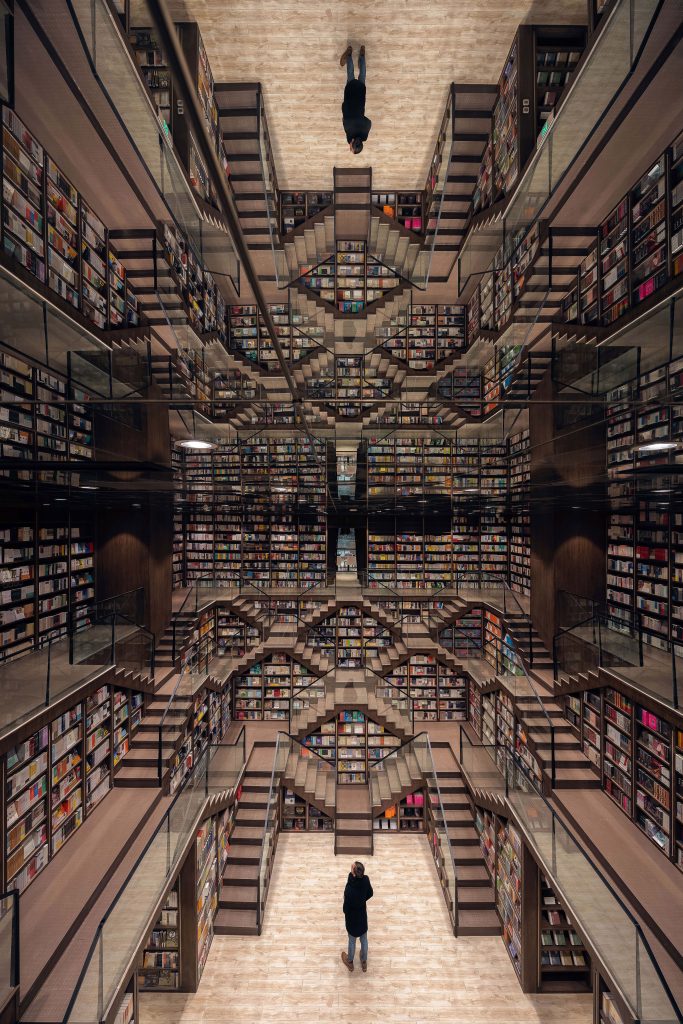
Chongqing Zhongshuge Bookstore by X+Living
At the centre of the store is a double-height hall, aptly named “Ladder Hall” by the studio, which features horizontal and vertical zigzagging sets of stairs that lead up and across tall bookshelves lining the walls. The wide treads of the stairs double up as seats for the visitors to rest and read, immerse in their books and thoughts. The mirrored ceiling overhead doubles the size of the already astonishing room and multiplies the number of staircases.
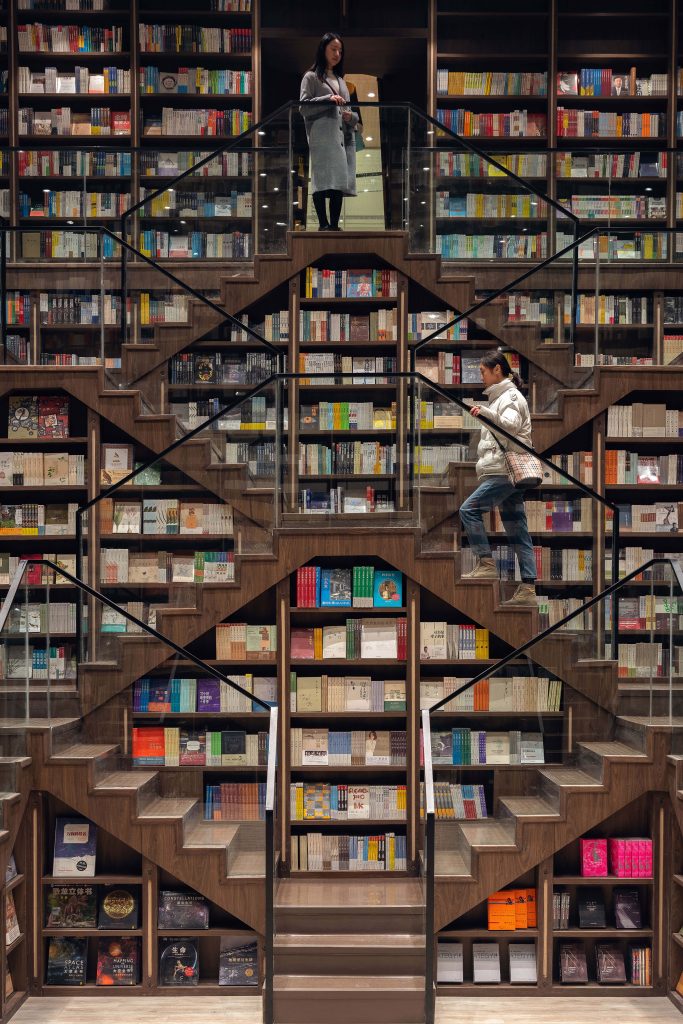
Chongqing Zhongshuge Bookstore by X+Living
Lampshade-shaped bookshelves are planted at varying heights throughout the hall. Reflected in the glossy floors of black tempered glass and on the mirrored ceiling, the conical pieces form a tunnel of books that beckons visitors to follow it deeper into the space and knowledge.
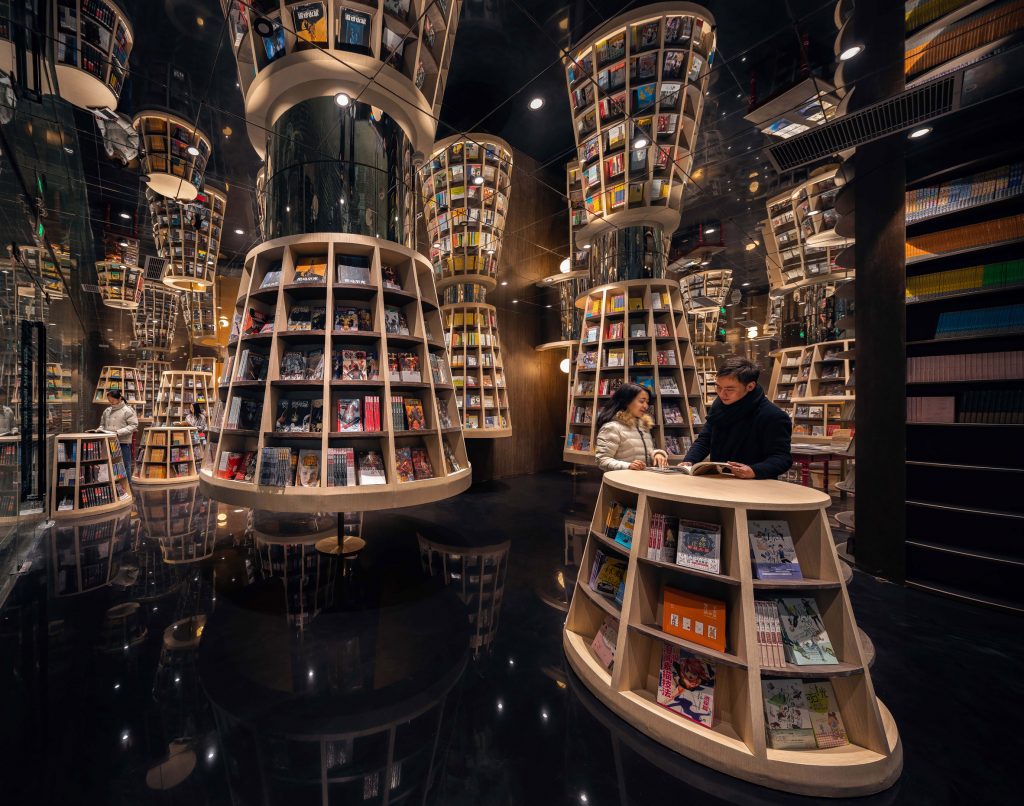
Chongqing Zhongshuge Bookstore by X+Living
This central space also pays homage to the specific towering buildings that line Chongqing’s “hypnotising landscape”. Instead of attempting to visually represent these historic landmarks, the studio focused on recreating a busy urban scene that could “arouse a cordial feeling among the citizens”. The store alse bears resemblance to stepwells seen in Rajasthan, India – huge wells located below ground which can only be accessed by descending successive flights of stairs.